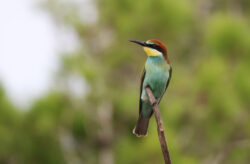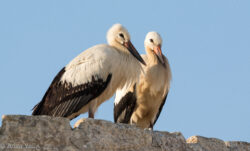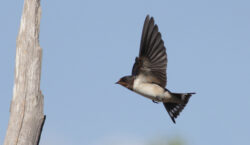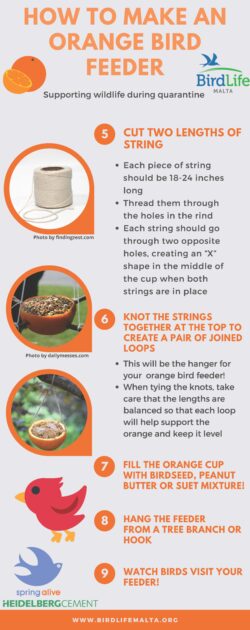Spring Alive is an international project organised by BirdLife International. The campaign is designed to promote children’s interest in nature and its conservation through the arrival of spring.

 The core component of Spring Alive is the website www.springalive.net with contributions from participants in over 40 countries in Europe, Asia and Africa.
The core component of Spring Alive is the website www.springalive.net with contributions from participants in over 40 countries in Europe, Asia and Africa.
All citizens, but specifically children and families, are encouraged to observe, engage in conservation as well as record the arrival of five migratory bird species each year: White Stork, Barn Swallow, Common Swift, Sand Martin and European Bee-eater.
Every year we will be celebrating spring migration together with events and activities. We shall be sharing with you hints and tips on how to help migratory birds. You can find out about our upcoming events here or by following us on Facebook.
- Aim of Spring Alive
- About migration!
- Spring Alive birds
- Did you see a migratory bird?
- Resources
- Spring Alive supporters
Aim of Spring Alive
 The overall aim of Spring Alive is to help European, Asian and African children, their families, friends and teachers, understand, engage with, and take action for birds and nature and to understand the need for international conservation for migratory species. It also encourages the broader community to get more involved with nature conservation in their countries by supporting BirdLife partners.
The overall aim of Spring Alive is to help European, Asian and African children, their families, friends and teachers, understand, engage with, and take action for birds and nature and to understand the need for international conservation for migratory species. It also encourages the broader community to get more involved with nature conservation in their countries by supporting BirdLife partners.
About migration!
One of the most amazing and fascinating facts about birds, is their ability to travel thousands of kilometres every year to spend the winter in a warmer and nicer climate. It is most extraordinary that every year birds gather into flocks and fly away.
Most birds migrate to look for food – in the winter it is not easy to find ‘summer’ food such as insects, fruits, seeds – in Europe, but there is plenty available in other parts of the world, where the climate is warmer. Migration makes the survival of species easier, although some birds do die during the flight.
 To survive the migration, birds must be healthy, have a lot of fat and fresh feathers. After the end of breeding time, and before they start to migrate, birds go through a ‘complete refurbishment’. The fat accumulates all over the bird’s body, under their skin. The old and destroyed summer flight feathers fall out and new ones appear in their place.
To survive the migration, birds must be healthy, have a lot of fat and fresh feathers. After the end of breeding time, and before they start to migrate, birds go through a ‘complete refurbishment’. The fat accumulates all over the bird’s body, under their skin. The old and destroyed summer flight feathers fall out and new ones appear in their place.
Birds get much of the information from their surroundings while they migrate. Yet there are three basic sources of information for them: the sun, stars and the earth’s magnetic field. Birds observe the location of stars and sun during their flight, and they can feel the magnetic field with a special receptor placed just over their beak.
Spring Alive birds
Learn more about the five Spring Alive birds here. Read about their migratory patterns in the diagrams below!
Sand Martin
This cute little brown-and-white bird is quite the long distance migrant. These sociable birds migrate from southern Africa, where they spend the winter, to their European breeding grounds, stopping over multiple times on the journey to eat and rest, including in Malta!
European Bee-eater
These colourful, charismatic birds are thought to migrate in family groups, travelling to Europe from the wintering ground in sub-Saharan Africa. While some populations cross over the Strait of Gibraltar into Spain, and other pass through the Middle East, some travel through Malta into Italy. They stop over on the island to feed on insects!
White Stork
These magnificent flocks are known to migrate in flocks of over a thousand, soaring high on rising air currents! As these air currents are absent over large stretches of water, White Storks avoid flying directly over the Mediterranean Sea, instead heading west to cross the Strait of Gibraltar into Spain, or heading east to traverse the Middle East! However, some pass through Italy, stopping over in Malta on their way through!
Barn Swallow
For many, Barn Swallows arriving in Europe is a sign that spring has come! These beautiful aerial aces migrate during the day, catching insects while flight! They migrate along one of three main routes, with many passing through Malta on their way to Italy and Central Europe.
Common Swift
These aerodynamic birds, with their long, sickle-shaped wings, are incredible to watch! Able to fly continuously for 10 months, these birds spend the winter in tropical Central Africa, moving around to take advantage of food sources and weather conditions! While most pass through Spain on their migration back to Europe, some pass through Malta!
Did you see a migratory bird?
During spring if you are out with your school, family or friends and see a migratory bird we encourage you to record your sightings here.
Resources
Feel free to download, print and use all of these resources to learn more about how to help migratory birds:
How to make my windows safe for birds
Swift nest box tutorial video (English)
Swift nest box tutorial video (Maltese)
How to make an orange bird feeder
Tips and tricks on how to become a good birdwatcher even at home (click to open)

















